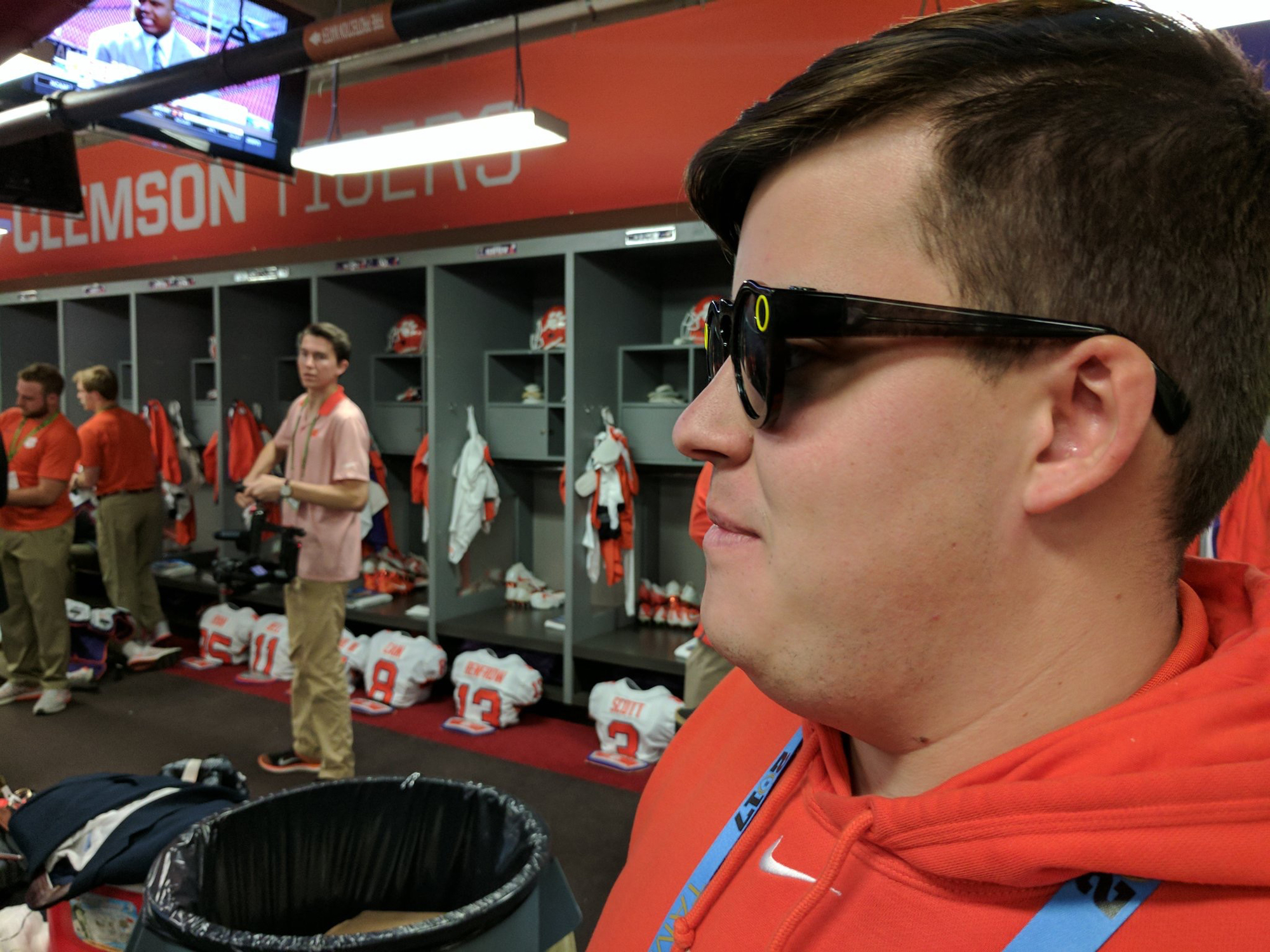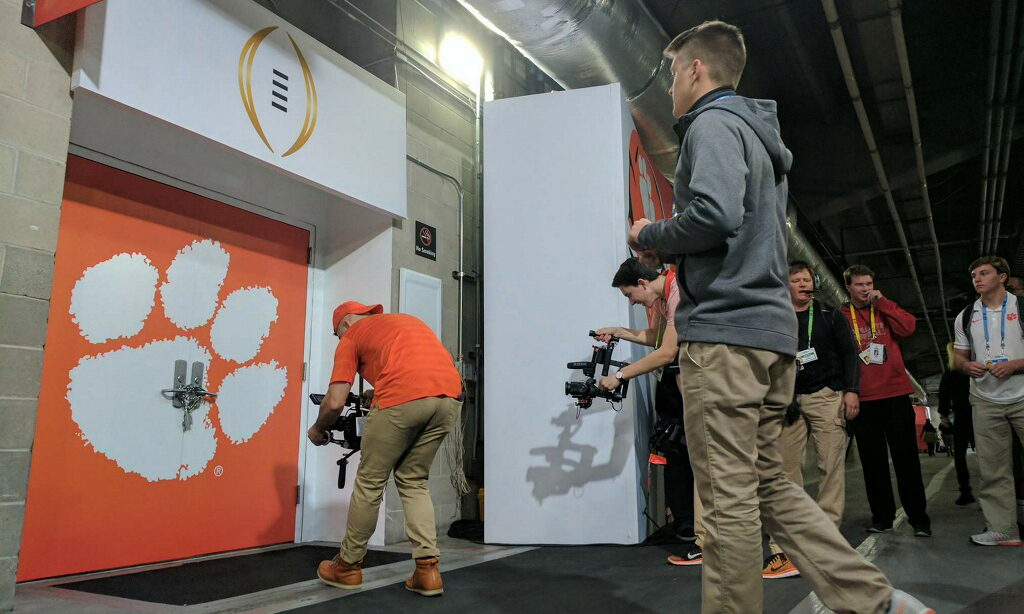Inside the Mobile Workflow That Turned Clemson Into a Content Machine at the CFP National Championship
Team of 10 floods various channels via an array of video-production tools
Story Highlights
The Clemson video and creative-media team arrived so early to Raymond James Stadium on the Monday of the College Football Playoff National Championship Game that there were still chains on the double doors to the Tigers’ locker room. So what would any good creative mind do? Turn it into a story; make it content.

The Clemson media team generated a wealth of content, both live and produced, surrounding the Tigers’ National Championship win in Tampa.
This is what Nik Conklin, coordinator of digital content, Clemson Athletics, loves not just about working in digital media but about working with this team. Despite an incredibly thorough game plan, he can let his creativity take him wherever it may.
“We prepare to react,” says Conklin. “We are proactive to be reactionary.”
Over the past handful of years, Clemson Athletics has completely reimagined its media department, focusing on quick yet professional content filled with loud graphics designed to attack the social-media platforms that its fans call home. That has made it one of the more successful brands in the sports-media space.

Snapchat Spectacles were among the many tools that Clemson used to turn around behind-the-scenes content quickly to fans.
The team — which is lead by Jonathan Gantt, director, new and creative media, and full-timers Jeff Kallin and Brian Hennessy — was 10 bodies strong in Tampa, with four full-timers on staff working with three photographers and three student videographers.
From the moment the Tigers left Memorial Stadium the Friday prior to the National Championship, the content spigot was turned on full blast, feeding everything from the athletic department’s website to Facebook, Instagram, Snapchat, Twitter, and more.
Clemson’s video team relies heavily on Sony cameras and the Adobe Creative Cloud for editing high-end video content. At the National Championship Game, shooters used an FS7, an a7S II, and an A6300, with a collection of Sony, Rokinon, and Canon L-series lenses. Editors worked on Prelude for logging footage, Premiere Pro for editing, After Effects for motion graphics, and Premiere Clip for editing mobile content.

Nik Conklin (shooting in orange shirt) takes pride in being able to react to stories on the fly, as he did here when the Tigers’ locker room was chained shut on the day of the National Championship Game.
To get content out to fans in a timely manner, the Clemson team relied heavily on a mobile workflow with Gantt, Conklin, Kallin, and Hennessy leading student videographers shooting and posting all-access content immediately from mobile devices. Those tools included iPhone, Samsung Galaxy, and Google Pixel devices for shooting, editing, and posting; Samsung Gear 360 for 360-degree photos and videos; and Snapchat Spectacles for a first-person perspective straight to Snapchat.
“There’s a certain immediacy [to this event], and there’s a need to get certain content out quickly to show a next level of the behind-the-scenes,” says Conklin. “Being mobile is critical to going live and being able to post directly to Snapchat. Even though the fans are right outside the stadium, we’re able to show them what the atmosphere is like inside. Having a mobile workflow has become an increasingly integral part of what we do and our content creation. That was no different on National Championship game day, knowing that a lot of eyes would be on us.”
The mobile tools and workflow were used to attack many of the popular live social-media platforms, including Facebook Live, Instagram Live, and Periscope. Although the live-shooters were prepared to react at a moment’s notice, Gantt had developed a robust plan to determine the best times to go live on the various channels. Those tent-pole moments included the team’s arrival at the stadium, pregame warmups, and, of course, rushing the field following the final whistle — a piece of programming that Conklin called the ultimate second-screen experience for the fan watching the game on a TV at home.
“We’re very thorough and very deliberate in our content plan and how we curate all of it and how we delegate which moments need to be capitalized upon,” he explains. “This is stuff that they’ll eventually get to see in a produced video, but, when you see it in a live broadcast, you get more of a sense of [context]. It’s more thorough.”
